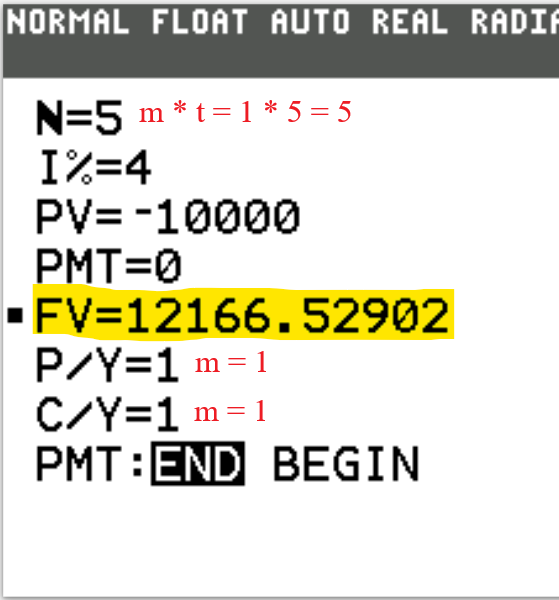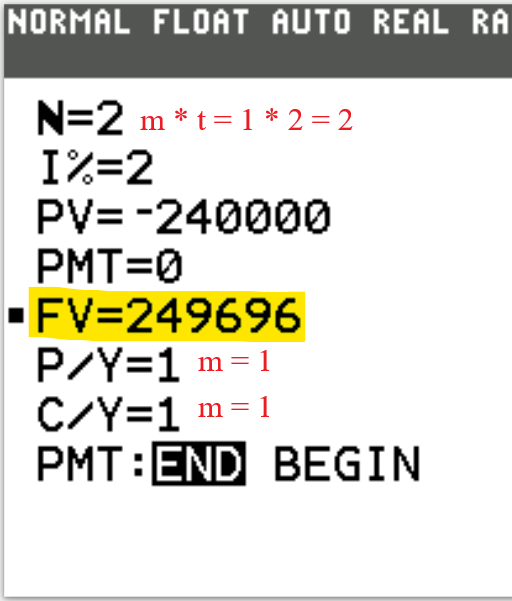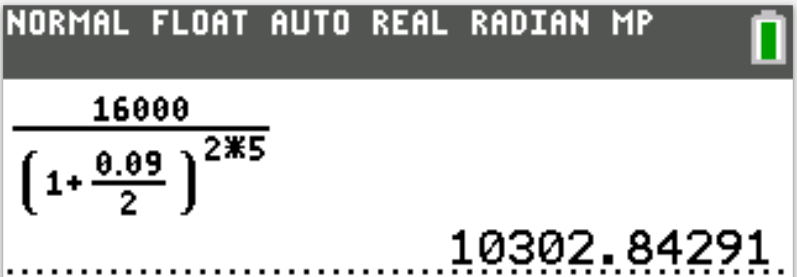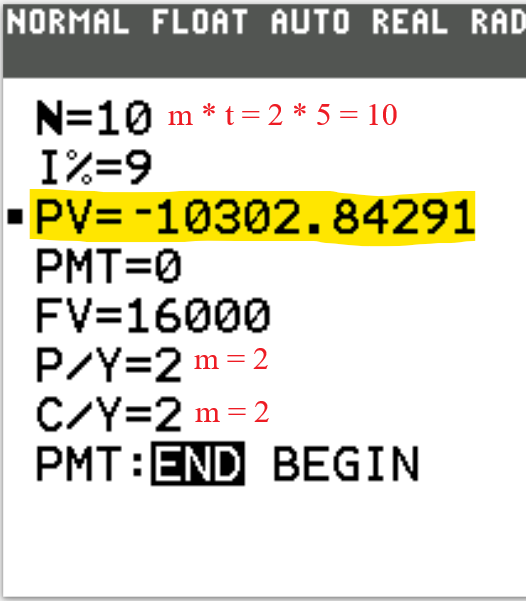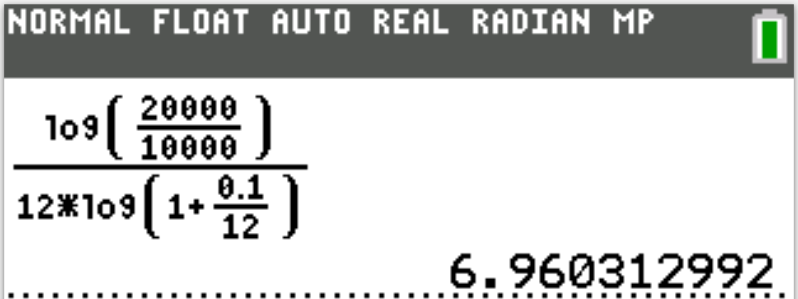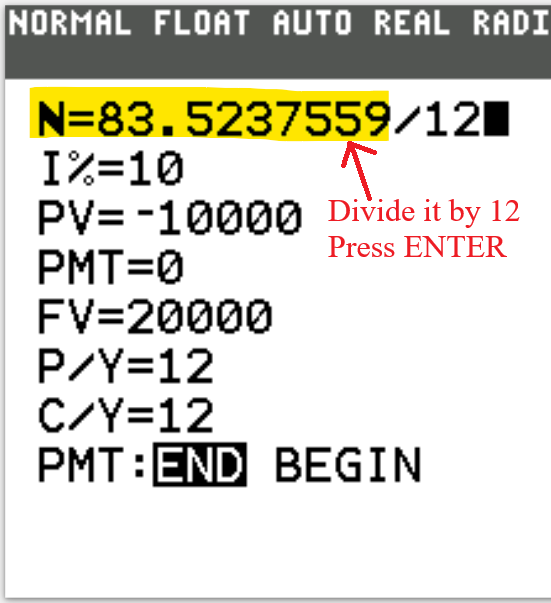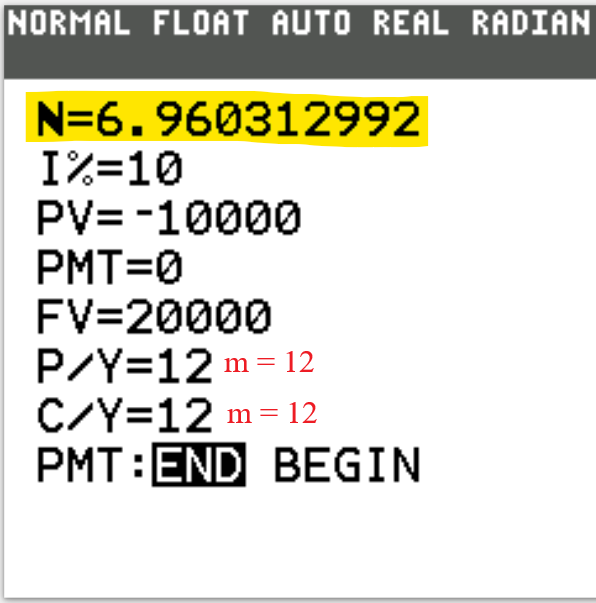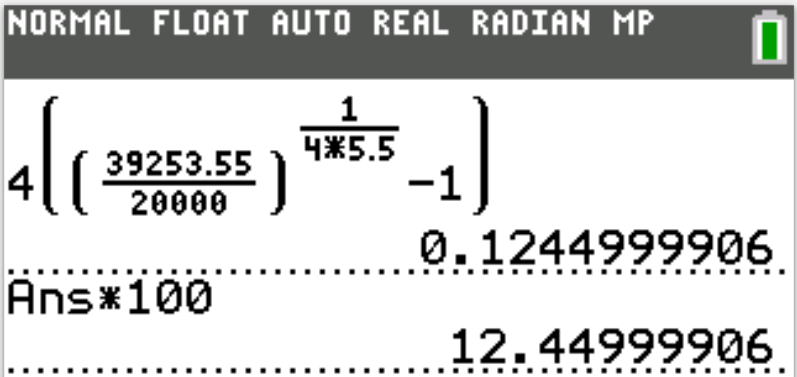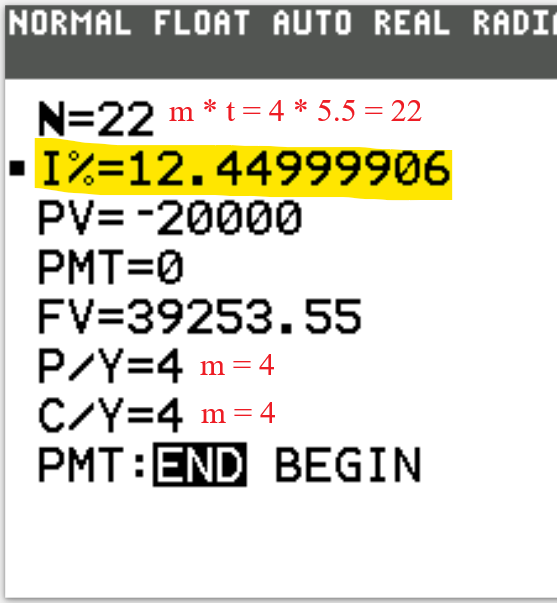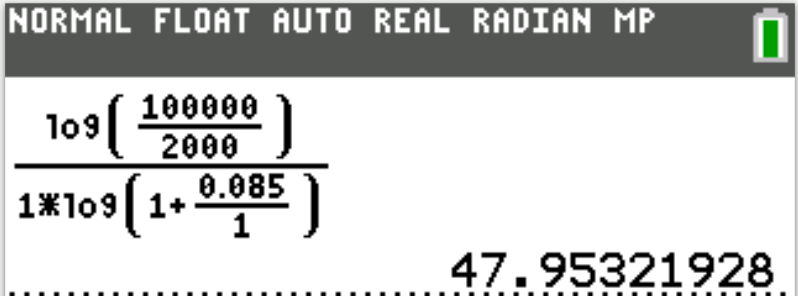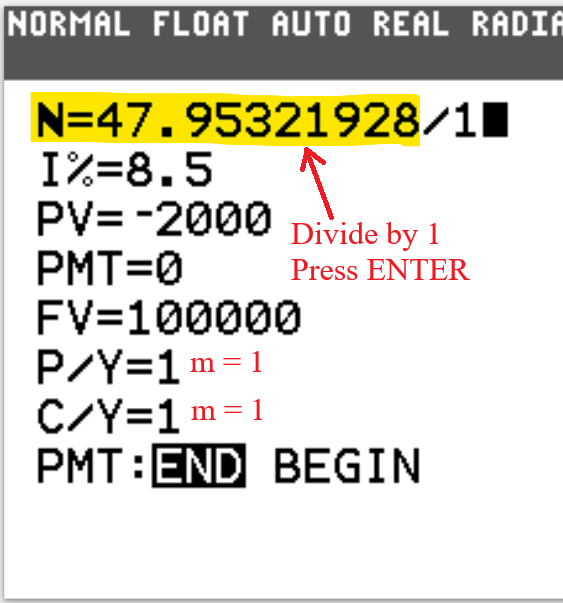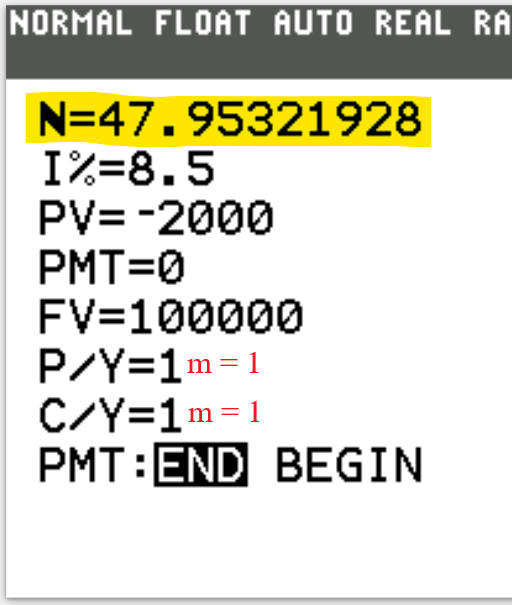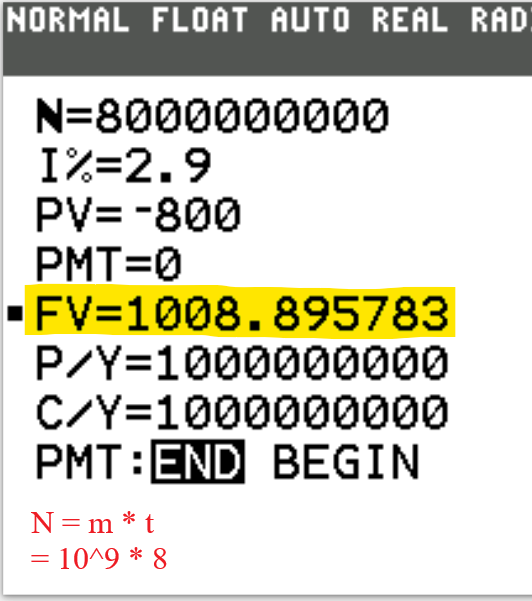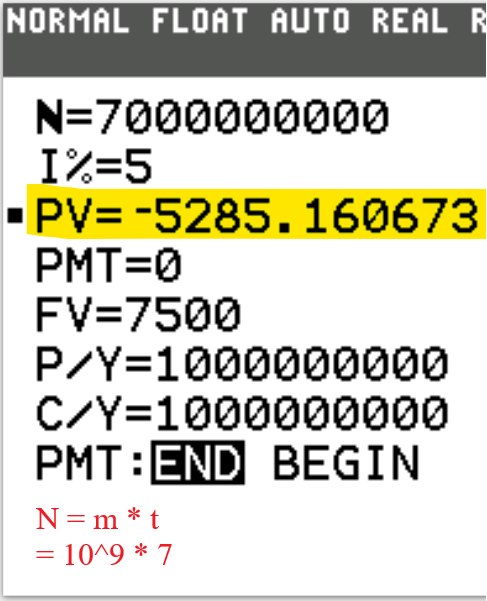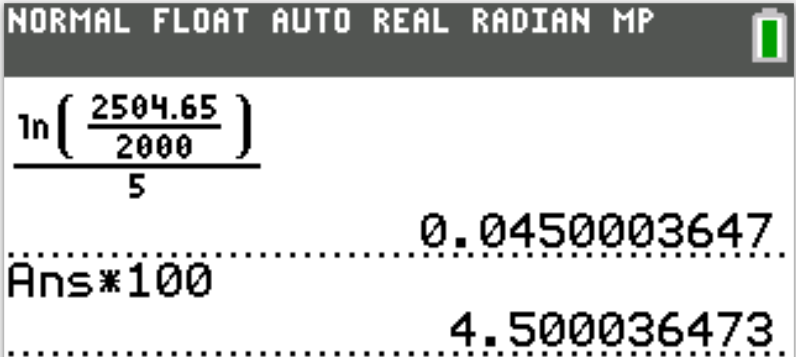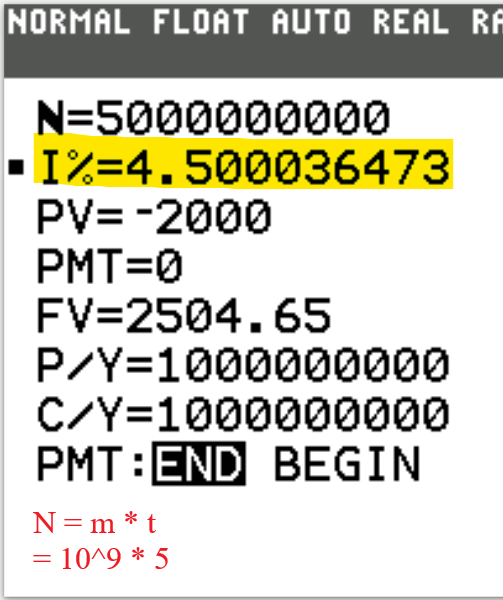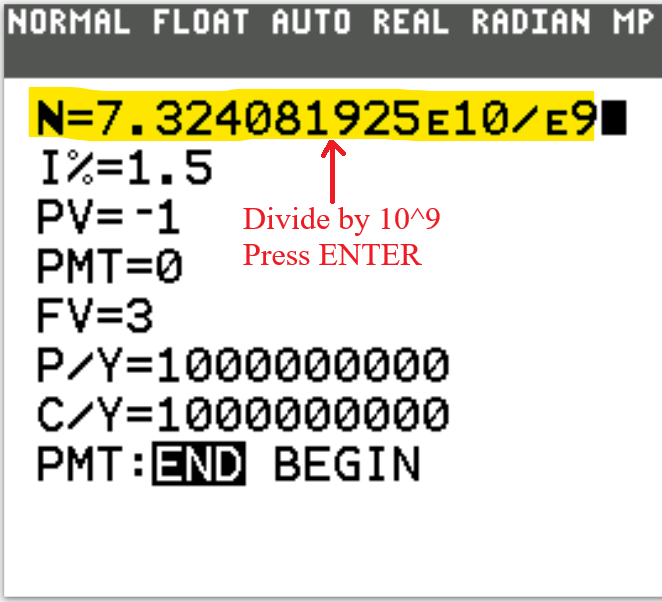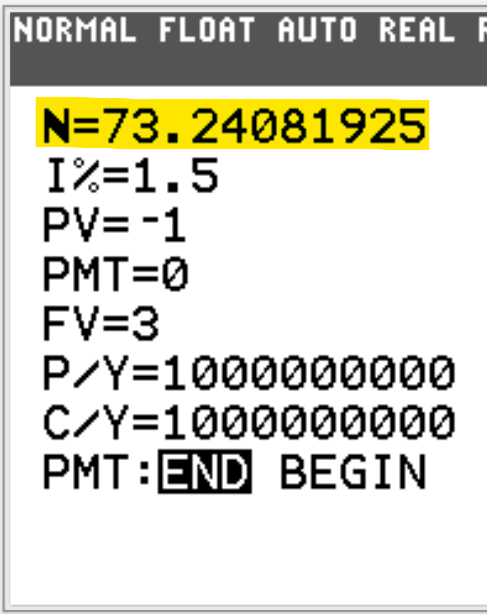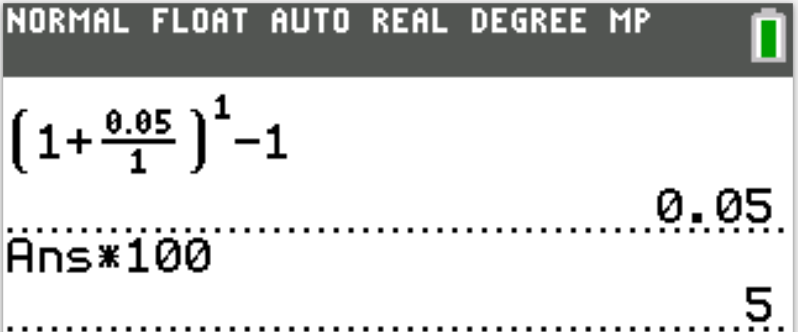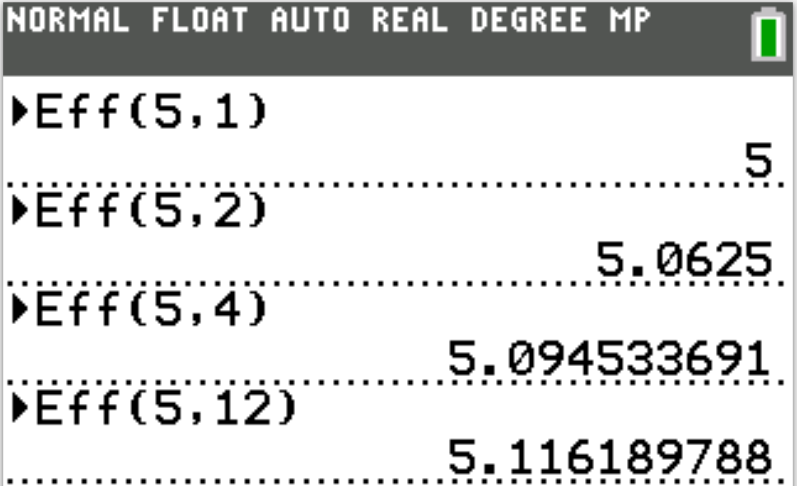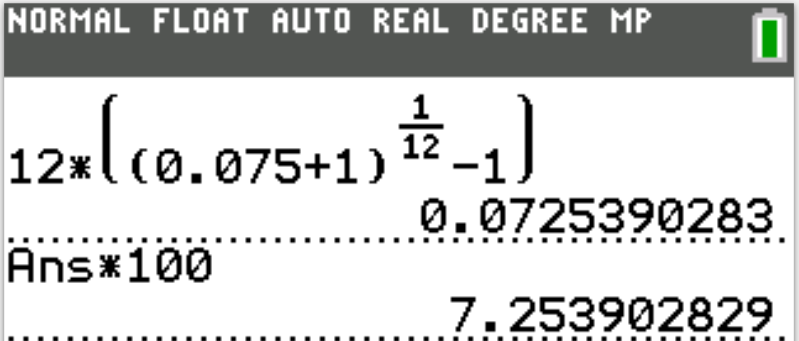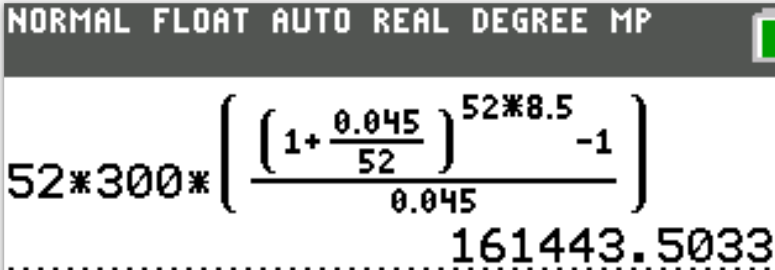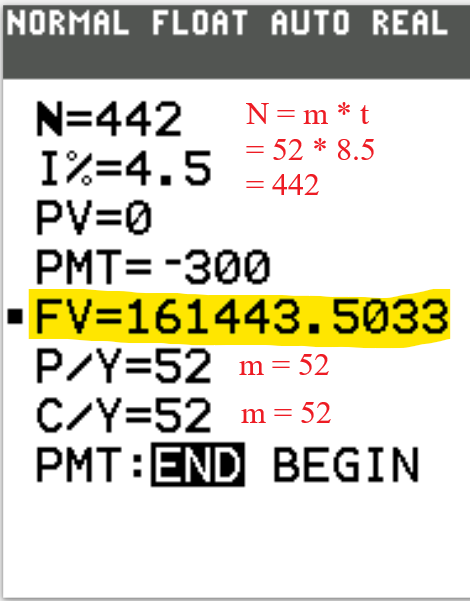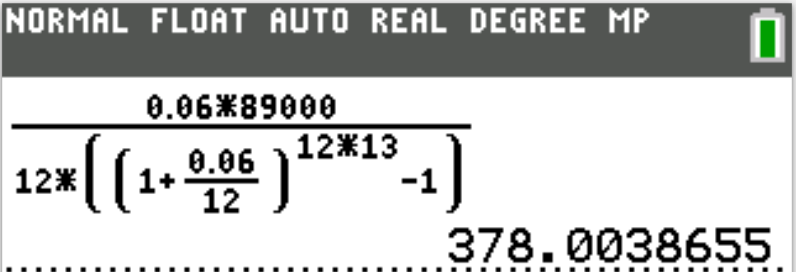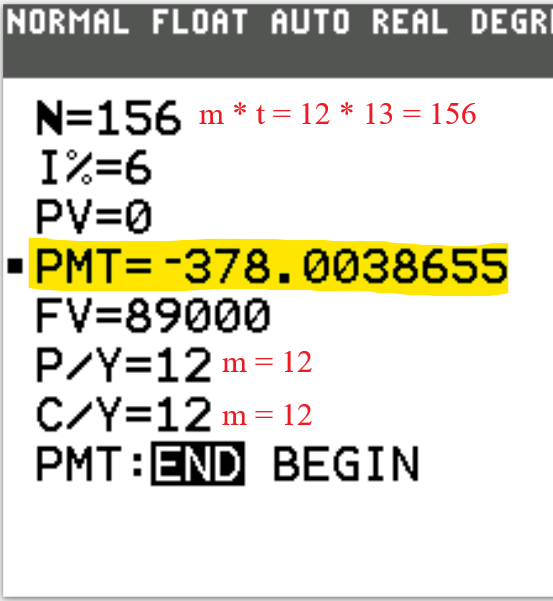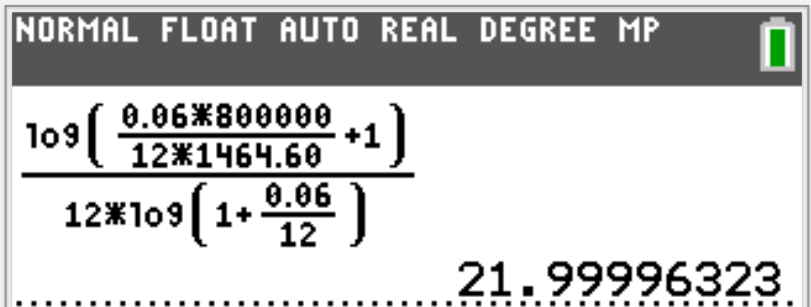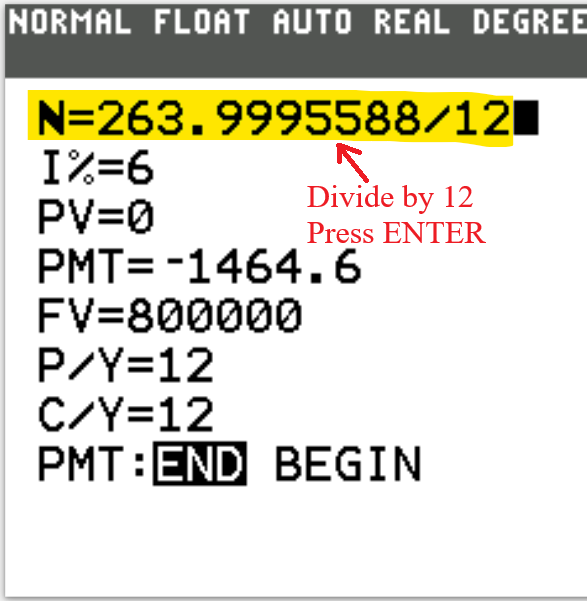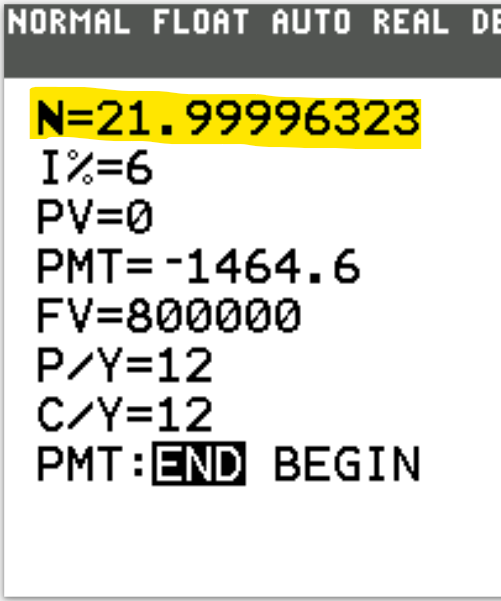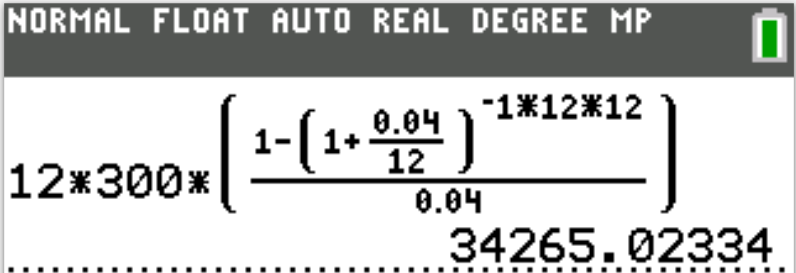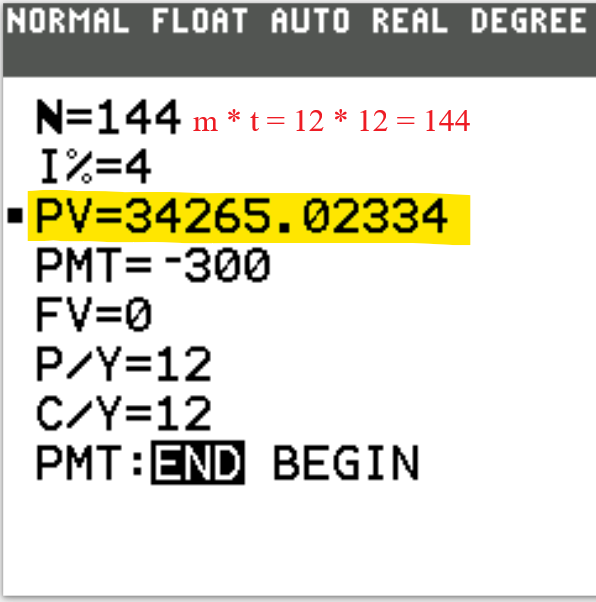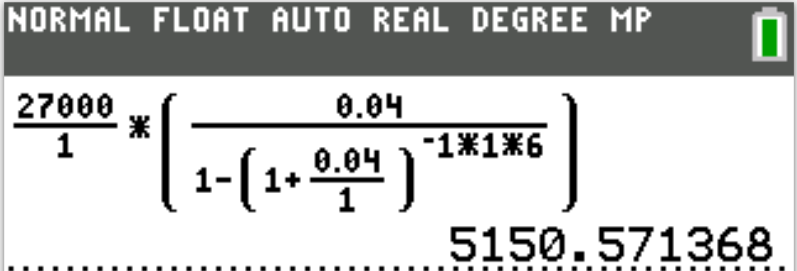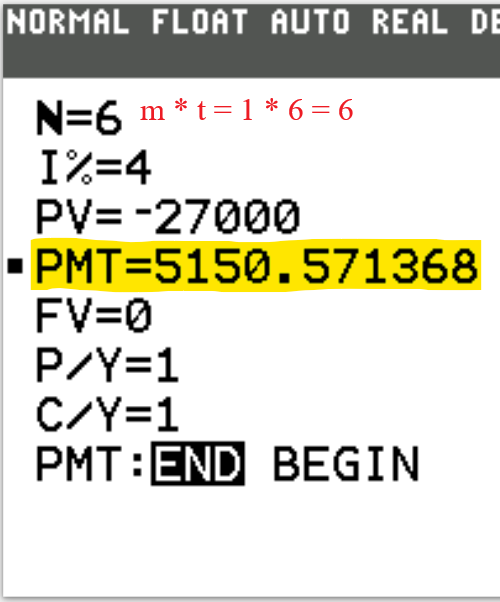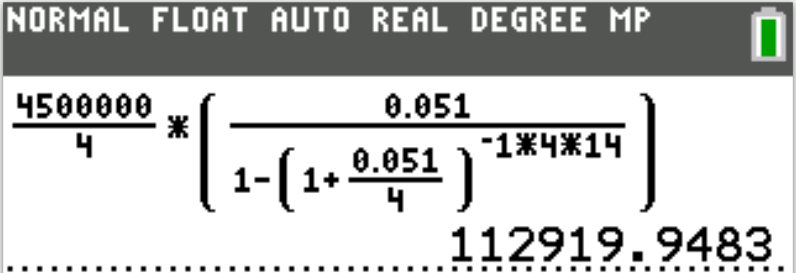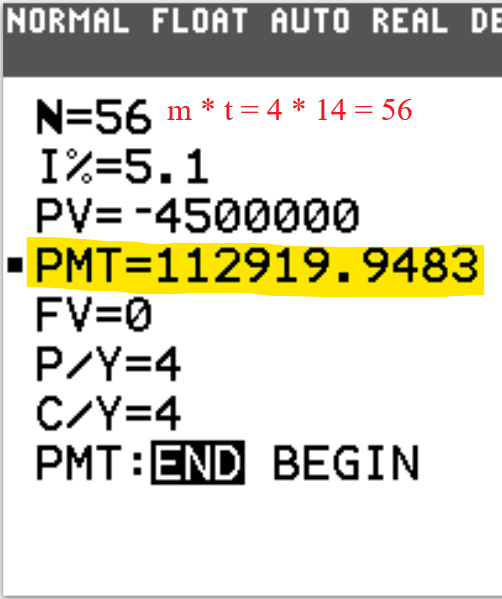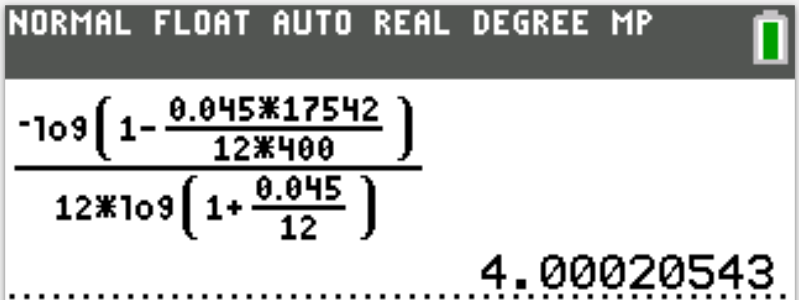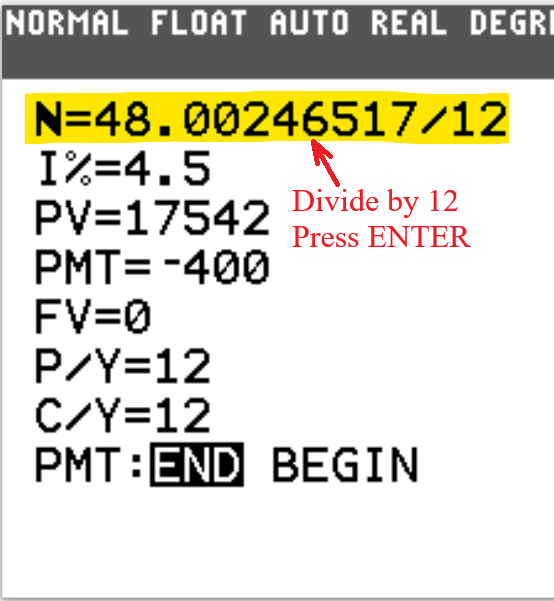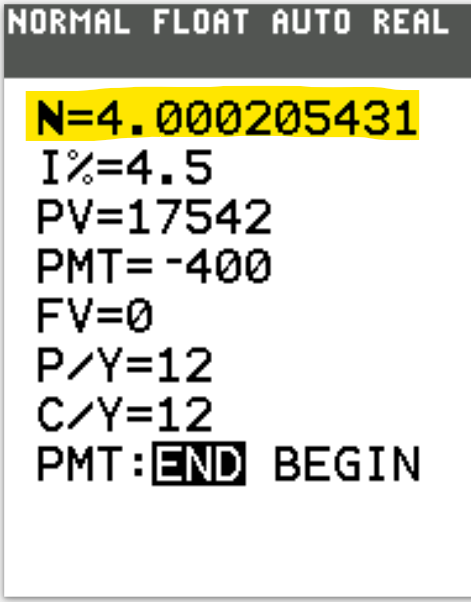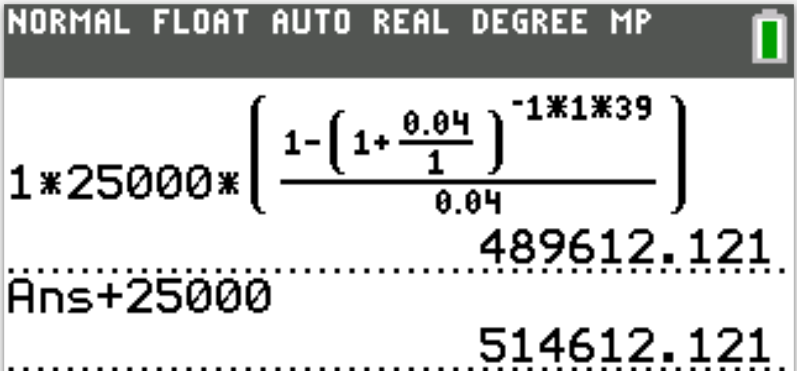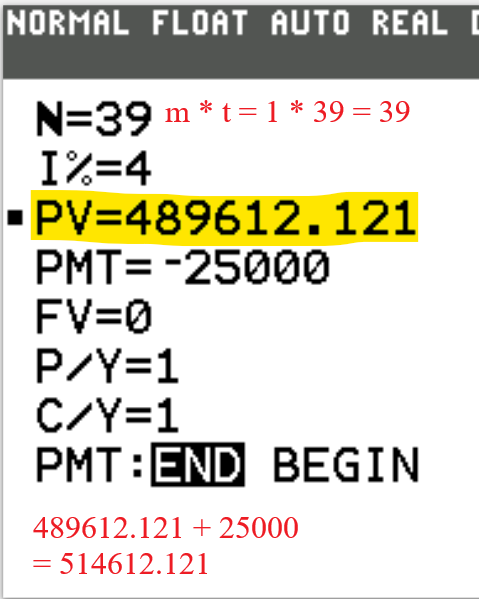The Mathematics of Finance using Texas Instruments Graphing Calculators
Welcome to VMATYC 2025 and to our Session
I greet you this day,
My name is Samuel Dominic Chukwuemeka (also known as SamDom For Peace).
I appreciate your attendance to this session.
If you do not mind, may we please take little time to introduce one another?
Name:
School/College/University:
Courses you teach:
Single Three-Year Software License Request Form
You may request for a complimentary three-year software license by completing the form at: https://ti-enews-education.ti.com/syllabus
You may use any of these TI calculators:
TI-83 Plus
TI-84 Plus series
TI-Nspire CX series
TI-89 Titanium
TI-73 Explorer
There are at least two approaches to using the TI-calculators for finance problems.
1st Approach: Direct Input of Substituted Values
(1.) Find the applicable
Formula
(2.) Substitute the values directly in the formula.
(3.) Enter it directly in the calculator.
(Please see Show/Hide Answer for examples.)
2nd Approach: Time Value of Money (TVM) Solver
The Finance app is required.
It can be assessed by pressing the APPS button, then pressing the 1: Finance app
We begin with the TVM Solver (known as the Time Value of Money Solver) which is found as the first app
under the CALC menu (CALC → 1: TVM Solver ...)
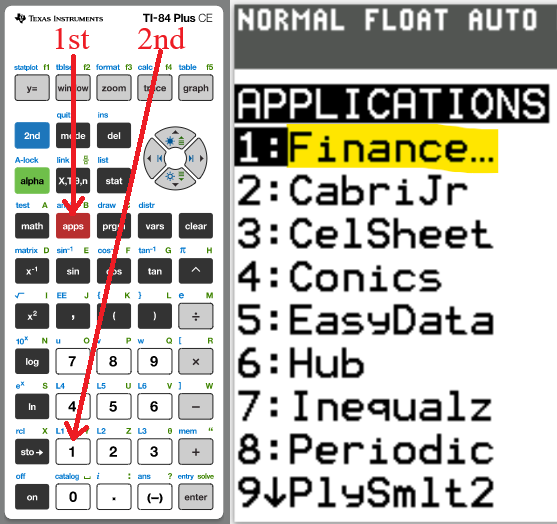
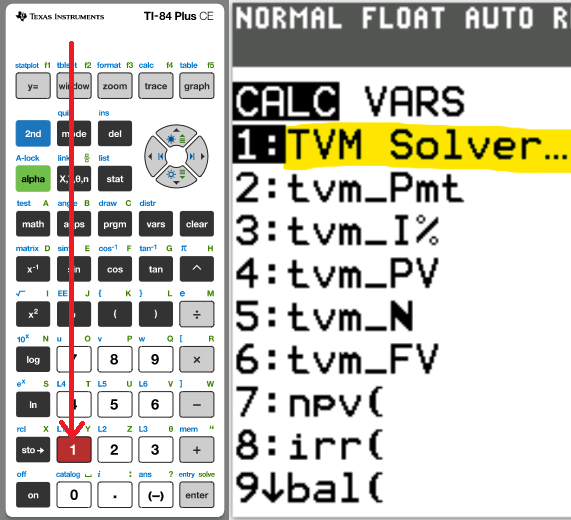
For calculations involving:
Compound Interest
Continuous Compound Interest
Annuity
Amortization
We use the TVM-Solver
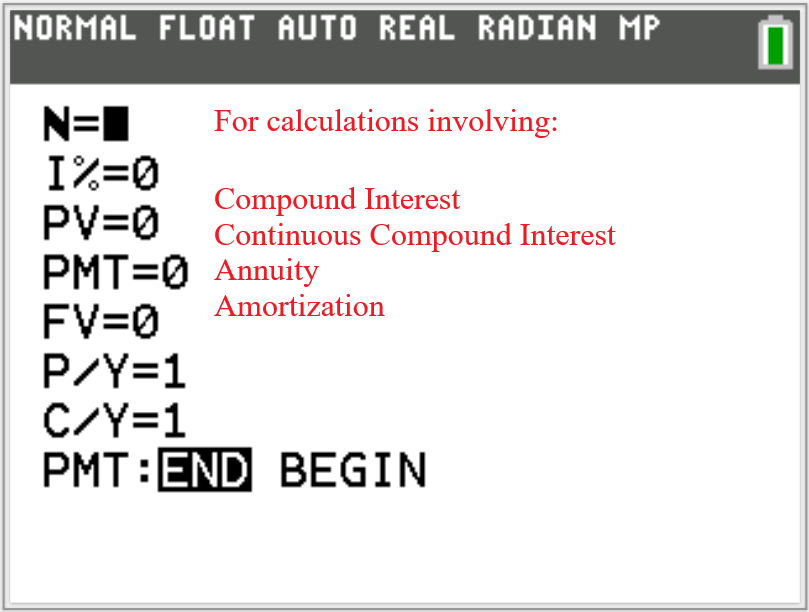
N is the total number of compounding periods (years).
$N = mt$
This is the product of the number of compounding periods per year and the time (in years).
I% is the interest rate.
If it is 3%, type 3. Do not include the %.
PV is the present value.
This is the Principal or Investment
PMT is the periodic payment.
This specifically applies to Annuity and Amortization.
FV is the future value.
This is the Amount.
P/Y is the number of payments per year.
C/Y is the number of compounding periods per year.
For Compound Interest and Continuous Compound Interest calculations, $P/Y = C/Y$
PMT:END:BEGIN Is the payment made at the end or at the beginning of the year?
Notable Notes:
(1.) No field should be blank.
Put a value in every field.
If the field does not apply for the question, put a 0 in that field.
For the value that you would like to find, put 0 initially.
(2.) For any cash outflow, put a negative sign.
For any cash inflow, put a positive sign.
(3.) Indicate whether the payment is made at the END or at the BEGIN of a period.
When the black focus is on any of those options, move to the field that you want to calculate.
(4.) Clear the 0 that you put in initially in that field.
Press the ALPHA key
That takes us to the SOLVE menu which is above the ENTER key. So, press the ENTER key.
That gives the value of what you want to calculate.
For calculations involving:
Annual Percentage Rate
Annual Percentage Yield
We use the Eff and Nom functions as applicable.
Use the codes as applicable:
Nom(APY, m)
Eff(APR, m)
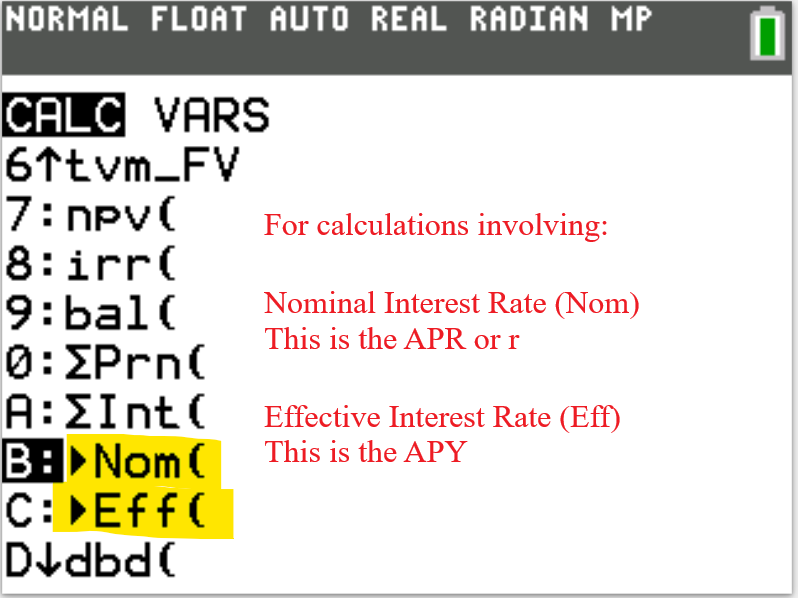
Comments, ideas, areas of improvement, questions, and constructive criticisms are welcome at anytime before,
during or after the presentation.
Let us discuss the examples.
Thank you.
Objectives
The Mathematics of Finance is designed to:
(1.) Meet one of the learning objectives of the VCCS (Virginia Community College System) standards for:
MTH 130:
Fundamentals of Reasoning
(Presents elementary concepts of algebra, linear graphing, financial literacy, descriptive
statistics, and measurement & geometry. ).
MTH 154:
Quantitative Reasoning
(Presents topics in proportional reasoning, modeling, financial literacy and validity studies (logic
and set theory).).
MTH
165: Finite Math
(Presents topics in systems of equations, matrices, linear programming, mathematics of finance,
counting theory, probability, and Markov Chains.).
(2.) Meet the QM (Quality Matters) and USDOE (United States Department of Education) requirements for
distance education as regards the provision of RSI (Regular and Substantive Interaction).
Federal Register: Distance Education and Innovation
St. John's University: New Federal Requirements for Distance Education: Regular and
Substantive Interaction (RSI)
Student – Content Interaction: Very high
Student – Student Interaction: High
Student – Faculty Interaction: High
(3.) Solve finance problems using technology: Texas Instruments (TI) calculators.
(4.) Solve finance problems using spreadsheets: Microsoft Excel and/or Google spreadsheets.
Skills Measured/Acquired
(1.) Use of prior knowledge
(2.) Critical Thinking
(3.) Interdisciplinary connections/applications
(4.) Technology
(5.) Active participation through direct questioning
(6.) Research
Symbols and Meanings
- $Per\:\:annum$ OR $Per\:\:year$ OR $Annually$ OR $Yearly$ means for a year (per $1$ year)
- $SI$ OR $I$ = Simple Interest or Dividend or Yield or Return ($)
- $P$ = Principal or Present Value or Investment ($)
- $r$ = Rate or Annual Interest Rate or Annual Percentage Rate (%)
- $APR$ = Rate or Annual Percentage Rate (%)
- $t$ = Time $(years)$
- $A$ = Amount or Future Value ($)
- $CI$ OR $I$ = Compound Interest or Yield or Dividend or Return($)
- $m$ = Number of Compounding Periods Per Year
- $n$ = Total Number of Compounding Periods $(years)$
- $CCI$ = Continuous Compound Interest or Yield or Dividend or Return($)
- $APY$ = Annual Percentage Yield or Effective Interest Rate or True Interest Rate (%)
- $FV$ = Future Value ($)
- $PMT$ = periodic payment ($)
- $PMTs$ = total periodic payments ($)
- $PV$ = Present Value of all payments ($)
- $payoff$ = payoff amount for a mortgage
- $k$ = number of remaining payments
- $CFV$ = Combined Future Value ($)
Formulas
Simple Interest
$ (1.)\:\: SI = Prt \\[3ex] (2.)\:\: SI = A - P \\[3ex] (3.)\:\: P = \dfrac{SI}{rt} \\[5ex] (4.)\:\: t = \dfrac{SI}{Pr} \\[5ex] (5.)\:\: r = \dfrac{SI}{Pt} \\[5ex] (6.)\:\: A = P + SI \\[3ex] (7.)\:\: A = P(1 + rt) \\[3ex] (8.)\:\: P = \dfrac{A}{1 + rt} \\[5ex] (9.)\:\: t = \dfrac{A - P}{Pr} \\[5ex] (10.)\:\: r = \dfrac{A - P}{Pt} \\[5ex] (11.)\:\: SI = \dfrac{Art}{1 + rt} $
Compound Interest
$ (1.)\:\: A = P\left(1 + \dfrac{r}{m}\right)^{mt} \\[7ex] (2.)\:\: P = \dfrac{A}{\left(1 + \dfrac{r}{m}\right)^{mt}} \\[10ex] (3.)\:\: r = m\left[\left(\dfrac{A}{P}\right)^{\dfrac{1}{mt}} - 1\right] \\[10ex] (4.)\:\: r = m\left(10^{\dfrac{\log\left(\dfrac{A}{P}\right)}{mt}} - 1\right) \\[10ex] (5.)\:\: t = \dfrac{\log\left(\dfrac{A}{P}\right)}{m\log\left(1 + \dfrac{r}{m}\right)} \\[7ex] (6.)\:\: A = P + CI \\[3ex] (7.)\:\: CI = A - P $
Values of m
| If Compounded: | m = |
|---|---|
| Annually |
1 (1 time per year) Also means every twelve months |
| Semiannually |
2 (2 times per year) Also means every six months |
| Quarterly |
4 (4 times per year) Also means every three months |
| Monthly |
12 (12 times per year) Also means every month |
| Weekly | 52 (52 times per year) |
| Daily (Ordinary/Banker's Rule) | 360 (360 times per year) |
| Daily (Exact) | 365 (365 times per year) |
Continuous Compound Interest
$ (1.)\:\: A = Pe^{rt} \\[4ex] (2.)\:\: P = \dfrac{A}{e^{rt}} \\[7ex] (3.)\:\: t = \dfrac{\ln \left(\dfrac{A}{P}\right)}{r} \\[7ex] (4.)\:\: r = \dfrac{\ln \left(\dfrac{A}{P}\right)}{t} \\[7ex] (5.)\:\: A = P + CCI \\[3ex] (6.)\:\: CCI = A - P \\[3ex] $
APY for Compound Interest
$ (1.)\:\: APY = \left(1 + \dfrac{r}{m}\right)^m - 1 \\[7ex] (2.)\:\: r = m\left[(APY + 1)^{\dfrac{1}{m}} - 1\right] \\[7ex] (3.)\:\: r = m\left(\sqrt[m]{APY + 1} - 1\right) $
APY for Continuous Compound Interest
$ (1.)\:\: APY = e^r - 1 \\[4ex] (2.)\:\: r = \ln(APY + 1) $
Future Value of Ordinary Annuity
$ (1.)\:\: FV = m * PMT * \left[\dfrac{\left(1 + \dfrac{r}{m}\right)^{mt} - 1}{r}\right] \\[10ex] (2.)\;\; FV = PMT * \dfrac{\left[\left(1 + \dfrac{r}{m}\right)^{mt} - 1\right]}{\dfrac{r}{m}} \\[10ex] (3.)\:\: t = \dfrac{\log\left[\dfrac{r * FV}{m * PMT} + 1\right]}{m * \log\left(1 + \dfrac{r}{m}\right)} \\[10ex] (4.)\:\: Total\:\:PMTs = PMT * m * t \\[3ex] (5.)\:\: CI = FV - Total\:\:PMTs \\[5ex] (6.)\:\: n = mt $
Sinking Fund
$ (1.)\:\: PMT = \dfrac{r * FV}{m * \left[\left(1 + \dfrac{r}{m}\right)^{mt} - 1\right]} \\[10ex] (2.)\:\: t = \dfrac{\log\left[\dfrac{r * FV}{m * PMT} + 1\right]}{m * \log\left(1 + \dfrac{r}{m}\right)} \\[10ex] (3.)\:\: Total\:\:PMTs = PMT * m * t \\[3ex] (4.)\:\: CI = FV - Total\:\:PMTs \\[3ex] (5.)\:\: n = mt $
Present Value of Ordinary Annuity
$ (1.)\:\: PV = m * PMT * \left[\dfrac{1 - \left(1 + \dfrac{r}{m}\right)^{-mt}}{r}\right] \\[10ex] (2.)\:\: t = -\dfrac{\log\left[1 - \dfrac{r * PV}{m * PMT}\right]}{m * \log\left(1 + \dfrac{r}{m}\right)} \\[10ex] (3.)\:\: n = mt \\[3ex] (4.)\:\: Total\:\:PMTs = PMT * m * t \\[3ex] (5.)\:\: CI = Total\:\:PMTs - PV $
Amortization
$ (1.)\:\: PMT = \dfrac{PV}{m} * \left[\dfrac{r}{1 - \left(1 + \dfrac{r}{m}\right)^{-mt}}\right] \\[10ex] (2.)\:\: t = -\dfrac{\log\left[1 - \dfrac{r * PV}{m * PMT}\right]}{m * \log\left(1 + \dfrac{r}{m}\right)} \\[10ex] (3.)\:\: n = mt \\[3ex] (4.)\:\: Payoff = PMT * n * \left[\dfrac{1 - \left(1 + \dfrac{r}{n}\right)^{-k}}{r}\right] \\[10ex] (5.)\:\: Total\:\:PMTs = PMT * m * t \\[3ex] (6.)\:\: CI = Total\:\:PMTs - PV \\[3ex] (7.)\:\: CI = PMT * m * t - PV \\[3ex] (8.)\:\: Number\:\:of\:\:payments = m * t \\[3ex] (9.)\:\: Down\:\:Payment = Given\:\:Rate * Purchase\:\:Price \\[3ex] (10.)\:\: Amount\:\:of\:\:Mortgage = Purchase\:\:Price - Down\:\:Payment \\[3ex] (11.)\:\: Payment\:\:for\:\:x\:\:points\:\:at\:closing = x\:\:as\:\:\% * Amount\:\:of\:\:Mortgage $
Formulas (PDF)
These formulas accommodate the TI-83 and the TI-84 models that do not have the fraction format: n/d: $\dfrac{numerator}{denominator}$(Please see the formulas in red)
Compound Interest
Continuous Compound Interest
Annual Percentage Yield
Ordinary Annuity: Future Value and Sinking Fund
Ordinary Annuity: Present Value and Amortization
References
Chukwuemeka, S.D (2025, March 20). Samuel Chukwuemeka Tutorials: Math, Science, and Technology.
Retrieved from https://quantitativereasoning.appspot.com/MathematicsFinance/financialMathematics.html
TI Products | Calculators and Technology | Texas Instruments. (n.d.). Education.ti.com.
https://education.ti.com/en/products

